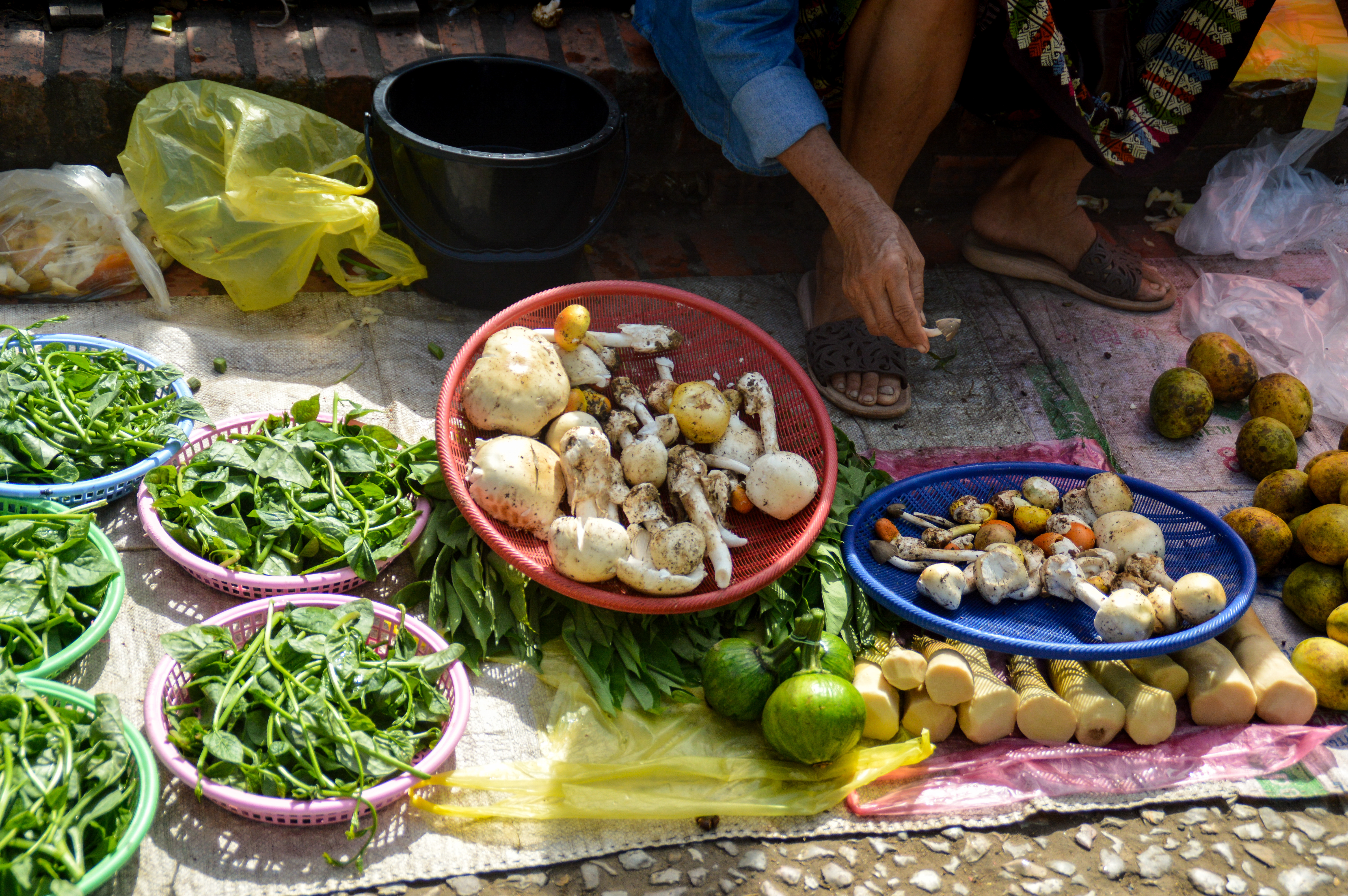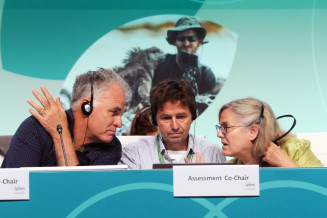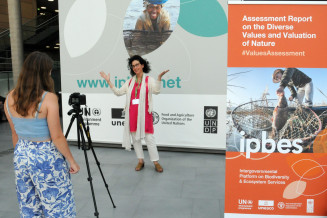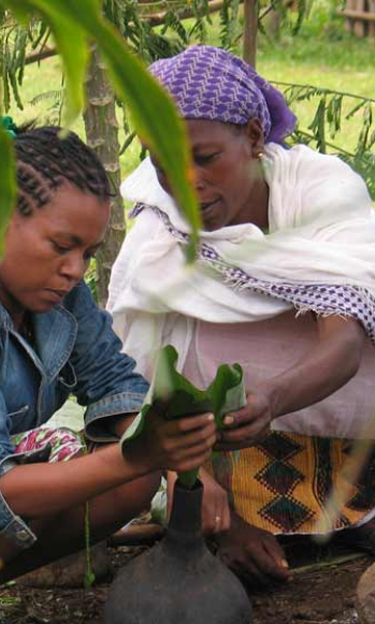
The assessment highlights a widespread use of wild species: billions of people rely on wild species for food, medicine, energy, income and others. Small-scale fisheries support over 90% of the 120 million people engaged in capture fisheries globally and 1.1 billion people without access to electricity rely on fuel wood for cooking.
The report was prepared over 4 years by 85 leading experts from 33 countries from all regions of the world and draws on more than 6,200 references to present the current situation for wild species of algae, animals, fungi and plants, review past trends and projects future scenarios, and explore drivers of sustainable use and examples of best practices.
Knowledge, practices and beliefs guide sustainable uses of wild species by many indigenous peoples and local communities. However, sectoral policies and other factors including loss of indigenous and local languages, education programs divorced from local, cultural and environmental conditions, and lack of attention to gendered roles threaten their ability to maintain and restore practices associated with sustainable use of wild species.
The assessment provides solutions to maintain sustainable uses of biodiversity, including nature-based tourism and education, which can support mental and physical well-being and facilitate connections to nature.

What is sustainable use?
The term sustainable use refers to the use of components of biological diversity in a way and at a rate that do not lead to the long-term decline of biological diversity, thereby maintaining its potential to meet the needs and aspirations of present and future generations (Article 2, Convention on Biological Diversity).
The assessment notes that sustainable use is also an outcome of social-ecological systems that aim to maintain biodiversity and ecosystem functions in the long term, while contributing to human well-being. It is a dynamic process as wild species, the ecosystems that support them and the social systems within which uses occur, change over time and space. This assessment notes the social, economic, and environmental dimensions of sustainability as identified by the 2030 Agenda for sustainable development and its Sustainable Development Goals.
UNESCO’s expertise
UNESCO is one of the four main institutional United Nations partners of IPBES, together with UNEP, FAO, and UNDP, and has provided support and engagement from the very early stages of its creation. UNESCO's Local and Indigenous Knowledge Systems programme (LINKS) hosts the Technical Support Unit for the IPBES Task Force on Indigenous and Local Knowledge Systems. UNESCO therefore played a key role in the development and implementation of methods for the assessment, including by organising a series of dialogue workshops that brought together indigenous peoples and local communities and assessment authors to discuss key themes and share knowledge related to the assessment, including use of wild species by indigenous peoples and local communities, challenges and threats to this sustainable use, the importance of traditional governance and management and ways forward for the future.
UNESCO is the custodial organization of knowledge and know-how that is respectful of biodiversity. Through its programmes, the organization promotes the co-production of scientific, indigenous and local knowledge, as well as education for sustainable development.
UNESCO designated sites and the World Network of Biosphere Reserves are rich in examples of good practices associated with worldviews and cosmologies in which humans do not dominate nature. This reconciliation emphasizes the diversity of values associated with life and seeks to reconnect humans to the biosphere by modifying their behavior at the individual level, but also to promote collective actions that shape public action. It is these transformations and transitions in solidarity that we must now accelerate in order to ensure human survival on Earth.
The World Network of Biosphere Reserves offers a connected approach to land and seascapes. Living in and managing a biosphere reserve means reconciling conservation and development objectives in the same space and promoting the convergence of the short-, medium- and long-term interests of the stakeholders involved and their descendants, demonstrating that sustainable use of biodiversity is possible.

How can biosphere reserves foster sustainable use?
As mentioned in the Summary for policymakers of the IPBES assessment of the Sustainable Use of Wild Species, biosphere reserves represent collaborative governance arrangements that engage key actors in a way that is meaningful for them, be it governance institutions or people who depend on wild species for their livelihoods and wellbeing. Therefore, biosphere reserves can ensure that decisions on sustainable use are equitable for all of these actors.
“(C.2.1) Robust governance systems tend to be adaptive to changes in social and ecological conditions and include participatory mechanisms (well established)” […] Collaborative governance arrangements that meaningfully engage these key actors, such as biosphere reserves designed by the United Nations Educational, Scientific and Cultural Organization can ensure that policy decisions on sustainable use are equitable (well established).”
By promoting community participation and management, as well as the sharing of knowledge and expertise, biosphere reserves have the capacity to make societies more sustainable.
UNESCO works to involve everyone in the governance and management of its sites and ensure the participation of a wide range of stakeholders, including indigenous peoples and local communities who maintain cultural and spiritual connections with their natural surroundings and are custodians of 80% of the world’s biodiversity. UNESCO is playing a key role in bringing indigenous peoples and local communities into the environmental agenda and in regional policy but also by involving and strengthening the private sector’s commitment to environmental action through strong public-private partnerships.
We only have a few years left to act
Through its unique and multidisciplinary mandate within the United Nations system, UNESCO is strengthening its efforts to reconcile all human beings with each other and with the rest of life on Earth, everywhere on the planet for the benefit of current and future generations. Biodiversity loss comes first and foremost from the crisis in our relations with other living species, since we are destroying the relationships we have with them. Not only are human activities responsible for much of the alteration of terrestrial and marine ecosystems but we only have a few years left to act.
Since biodiversity is the living fabric of our planet, we must aspire to be in solidarity with all life and defend nature and life everywhere by finally making humans the true companions of the biosphere, beyond past categories and oppositions - natural versus artificial, wild versus domestic, protected versus exploited.
Use of wild coffee and beekeeping in Kafa Biosphere Reserve, Ethiopia
The livelihoods of 15 million people in Ethiopia, Africa’s biggest coffee producer, depend on Arabica coffee. Kafa Biosphere Reserve is considered the birthplace of Arabica coffee and is home to about half of Ethiopia’s remaining Afromontane forests, a gene pool for crop wild relatives of coffee. These wild relatives can be developed into coffee varieties that are resistant to coffee diseases and have the potential to survive the impact of climate change[1]. Different types of coffee are grown according to management intensity, from forest coffee with only slight clearance during harvesting to semi-forest coffee grown removing understory shrubs and weeds and linked to a decrease in forest diversity[2], to more intensive types (garden and plantation coffee). Coffee producers are often also beekeepers as pollination boosts coffee production and coffee blooms contribute to honey quality and quantity.
However, people living and working in the area face challenges. Widespread deforestation due to infrastructure expansion, commercial agriculture, and subsistence agriculture encroachment into forest causes rising temperatures and decreased soil moisture, threatening the survival of wild coffee plants. Coffee production in the area also heavily relies on wild coffee harvesting[3] and wild coffee seeds and seedlings are also an important source of planting material for farms. Low incomes and uncertain land tenure tend to favor short-term profit and engagement in intensive types of coffee management. Finally, beekeeping is dominated by men; when involved, women are often excluded from the share of income from honey.
The UNESCO designation as a biosphere reserve in 2010 contributed to an increase of participatory forest management approaches, and therefore to a decrease in forest conversion. The ongoing Women for Bees programme empowers women through training and exchange of knowledge and know-how on sustainable beekeeping. A training to exchange knowledge and know-how and responding to Kafa Biosphere Reserve women’s need to access modern beekeeping is scheduled in 2022.
Sustainable coastal fisheries in Sahamalaza-Iles Radama Biosphere Reserve, Madagascar
Argan culture in Arganeraie Biosphere Reserve, Morocco
By providing decision-makers with the best-available evidence, analysis and options, the IPBES Thematic Assessment of the Sustainable Use of Wild Species will support implementation of the post-2020 Global Biodiversity Framework of the Convention on Biological Diversity (CBD) that is due to be adopted in Montreal, Canada, in December 2022, at the Fifteenth Meeting of the Parties to the CBD. More broadly, this detailed assessment will also inform biodiversity issues tied to the Sustainable Development Goals.
[1] https://www.worldbank.org/en/news/feature/2020/06/04/why-biodiversity-matters-to-your-daily-cup-of-coffee
[2] Tassew et al 2021 https://www.sciencedirect.com/science/article/pii/S2405844021018934
[3] NABU 2016 http://imperia.verbandsnetz.nabu.de/imperia/md/content/nabude/international/nabu_biodiversity_assessment_15.pdf













